Gangsters and G-Men on Screen
Gangsters and G-Men on Screen
Crime Cinema Then and Now
Gene D. Phillips
Rowman & Littlefield
Lanham Boulder New York Toronto Plymouth, UK
Published by Rowman & Littlefield
4501 Forbes Boulevard, Suite 200, Lanham, Maryland 20706
www.rowman.com
10 Thornbury Road, Plymouth PL6 7PP, United Kingdom
Copyright 2014 by Rowman & Littlefield
All photos from the authors collection
All rights reserved . No part of this book may be reproduced in any form or by any electronic or mechanical means, including information storage and retrieval systems, without written permission from the publisher, except by a reviewer who may quote passages in a review.
British Library Cataloguing in Publication Information Available
Library of Congress Cataloging-in-Publication Data
Phillips, Gene D.
Gangsters and G-men on screen : crime cinema then and now / Gene D. Phillips.
pages cm
Includes bibliographical references and index.
ISBN 978-1-4422-3075-0 (hardback : alk. paper) ISBN 978-1-4422-3076-7 (ebook) 1. Gangster filmsHistory and criticism. I. Title.
PN1995.9.G3P45 2014
791.43'6556dc23 2014012122
 The paper used in this publication meets the minimum requirements of American National Standard for Information SciencesPermanence of Paper for Printed Library Materials, ANSI/NISO Z39.48-1992. Printed in the United States of America
The paper used in this publication meets the minimum requirements of American National Standard for Information SciencesPermanence of Paper for Printed Library Materials, ANSI/NISO Z39.48-1992. Printed in the United States of America
For James M. Welsh
Acknowledgments
I am especially grateful to the filmmakers who discussed their films with me during the long period in which I was developing this project. I interviewed John Huston, Arthur Penn, and Martin Scorsese in New York, and Fritz Lang and William Wyler in Hollywood. I also talked with Francis Ford Coppola at the Cannes International Film Festival.
I would also like to mention the staffs of the Film Study Center of the Museum of Modern Art in New York; the Margaret Herrick Library of the Academy of Motion Picture Arts and Sciences in Beverly Hills, California; the Motion Picture Section of the Library of Congress in Washington, D.C.; and the Special Collections of the Newberry Library in Chicago.
Some material in this book previously appeared in a completely different form in the following publications: Faulkner and the Film, Literature/Film Quarterly 1, no. 3 (Summer 1973): 26373, copyright 1973, by Salisbury University; Fritz Lang Remembers, Focus on Film (London) 5, no. 2 (Spring 1975): 4351; William Wyler, Focus on Film (London) 5, no. 2 (Spring 1976): 510; Major Film Directors of the American and British Cinema (Cranbury, N.J.: Associated University Presses, 1999), copyright 1999, by Associated University Presses; Godfather: The Intimate Francis Ford Coppola (Lexington: University of Kentucky Press, 2004), copyright 2004, by University of Kentucky Press.
Introduction
In Search of the Gangster Genre
T he gangster film has been part of the Hollywood output for a century; indeed, its persistent popularity is unequaled in Hollywood history. Yet, the gangster film has been slighted by a number of critics and film historians alike, not because it is artistically inferior to other types of film, but because it deals with the tawdry and unpleasant aspects of American life. In short, it focuses on the kind of violent conflicts that other movies tend to gloss over.
If one peruses the motion picture section of a university library, one will notice that there are far more books devoted to other genres, for instance, the western, than the gangster film. Consequently, this book highlights a variety of significant gangster movies, for example, such classic gangster movies as Little Caesar and The Public Enemy . But it also features movies like The Lady from Shanghai , a well-known thriller that is not considered a gangster film. As Colin McArthur opines in Underworld USA , one of the first important books on the gangster film, there is no reason why a picture like The Lady from Shanghai cannot be related by iconography and personnel to more than one type of film. Moreover, this study includes neglected gangster pictures the likes of The Story of Temple Drake , derived from William Faulkners notorious novel Sanctuary , as an indication that there are more gangster films of worth than one might assume.
In sum, this book presents an in-depth discussion of several gangster films, some of which are familiar members of the gangster genre, like John Hustons The Asphalt Jungle , and some that deserve to be better known, for example, Stephen Frearss The Grifters .
That a few meaningful books on the gangster film have appeared throughout the years demonstrates the continued interest in the genre. These include Carlos Clarenss Crime Movies: An Illustrated History of the Gangster Genre from D. W. Griffith to Pulp Fiction (1980), with an afterword by Foster Hirsch that updates the book (1997); Marilyn Yaquintos Pump Em Full of Lead: A Look at Gangsters on Film (1998); Jack Shadoians Dreams and Dead Ends: The American Gangster Film , 2nd ed. (2003), first printed in 1977; and Thomas Leitchs Crime Films (2002), reprinted in 2009.
McArthurs Underworld USA (1972) is a groundbreaking book on the gangster genre, but it covers only a few major crime films. By the same token, Douglas Brodes Money, Women, and Guns: Crime Movies from Bonnie and Clyde to the Present (1995) presents commentary on a selection of mostly standard gangster pictures, whereas in this volume, I include some overlooked crime movies that deserve more attention than they have received. In addition, I have interviewed film directors, as well as other artists and technicians, associated with the films I treat. I also focus on some more recent movies, along with some from the classic period. These later movies are reminders that the gangster genre is still with us and is not going away.
Chapter One
The Rise of the Gangster Film
T he city has always been looked upon as the Citadel of Sin in gangster movies because of the huge influx of immigrants to this country. Between 1880 and 1914, the overcrowded slums of such cities as New York and Chicago were seedbeds of criminality. In brief, the rise of gangsters was the result of the corruption and impersonality of the modern city.
The immigrant population observed that only the gangs defied the corrupt cops and city officials, and so the gangs found their recruits in the mean streets of big U.S. cities. During the era of silent pictures (in round numbers, 18951928), films often reflected the plight of the immigrants. We were always conscious, writes Robert Warshow in his celebrated essay The Gangster as Tragic Hero, that the whole meaning of the gangsters career is in a drive for success; the typical gangster film presents a steady upward progress, followed by a very precipitate fall.
The gangster movie actually put its happy ending in the middle, when the criminal is enjoying the fruits of his ill-gotten gains. The end of the picture depicts his tragic downfall, as he grimly meets his fate.
The gangster genre was born in the silent era, with pioneer director D. W. Griffiths two-reeler, The Muskateers of Pig Alley . In 1912, Griffith made this eighteen-minute movie (muskateer was another name for hoodlum in those days), which is generally considered the first real gangster picture. The Biograph Film Company, where Griffith worked, was located on New Yorks seedy Lower East Side. Griffith filmed the exterior scenes in the backstreets and alleys of the neighborhood.
Griffith tore the movies plot from the headlines of the day. At two reels, the film was the standard length of movies of that time. In fact, Griffith shot 485 Biograph shorts between 1908 and 1915, before moving on to features. Some of them, like The Muskateers of Pig Alley , were mini-masterpieces.
Next page
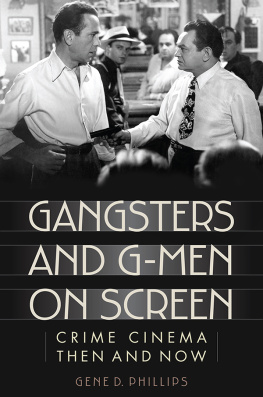

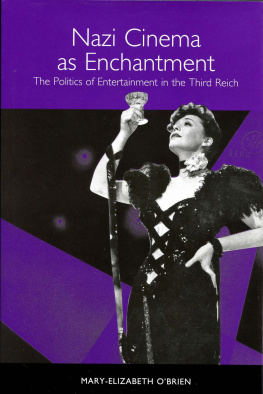

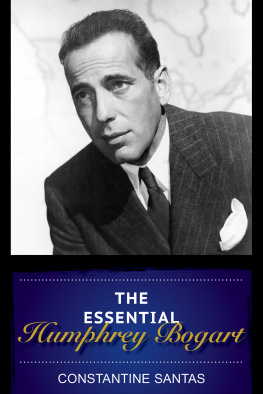
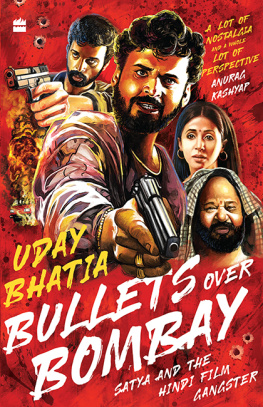
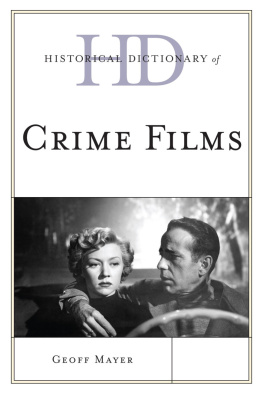
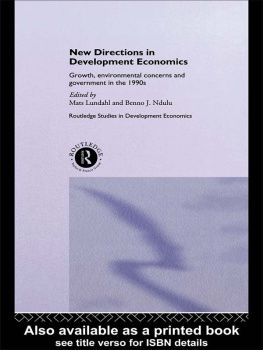
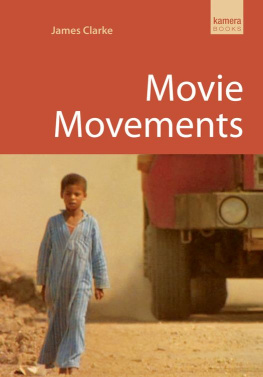
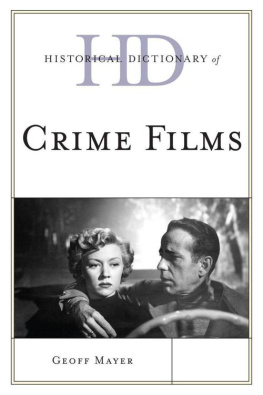
 The paper used in this publication meets the minimum requirements of American National Standard for Information SciencesPermanence of Paper for Printed Library Materials, ANSI/NISO Z39.48-1992. Printed in the United States of America
The paper used in this publication meets the minimum requirements of American National Standard for Information SciencesPermanence of Paper for Printed Library Materials, ANSI/NISO Z39.48-1992. Printed in the United States of America